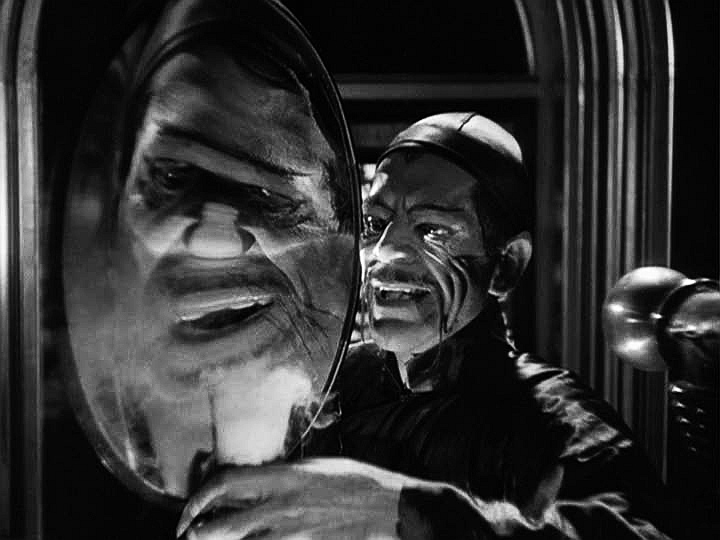It’s already been removed, but FOX was running in interactive website game called “KeepHerAwake”, as a promotion for the new Nightmare on Elm Street movie. The idea is that the user manipulates a girl in her bedroom to keep her awake so that the supernatural killer can’t kill her in her sleep.
From Susannah Breslin’s post on True Slant:
It’s going to be a long night, so you start with something light. You click an icon and her alarm clock rings. You make her jump up and down on her bed in her underpants. You get her to read a book. But that’s no fun, right? Maybe you’re a little bored.
You put her in the shower, naked, natch, where the camera wanders across her body. You make her do jumping jacks and watch her boobs bounce in that very tight T-shirt she’s wearing. Still, there’s something missing. Isn’t there something else you can do? Something, say, more … fun?
You decide to apply more aggressive methods. You click the switchblade icon, and she picks up a knife. As you watch, she cuts herself in the side with it, gasping. Hm, not bad, you think. You try another. You click the icon that looks like a lighter, and she picks it up. You look on while she burns her arm, trembling in agony. If you’d known torture was this easy, well …
Unfortunately, now you’ve run out of tricks, and it seems your options are more limited than 18 U.S.C. § 2340. Don’t you hate it when that happens? Slowly, she falls asleep. Suffice to say, in the end, she dies. Too bad all your torturing couldn’t, er, save her.
While I’m not familiar with the Nightmare on Elm Street franchise, I understand that a key aspect of the premise is that Krueger can only attack his victims when they are asleep. Therefore, the dramatic tension comes from the increasingly desperate measures the characters adopt to stay awake and therefore alive.
Presumably, while watching the film, the viewer will empathize with the characters and their struggle to stay alive. (Carol J Clover’s book Men, Women and Chainsaws has a detailed exploration of the complexity of audience/character identification in horror, in which the viewer’s identification constantly switches between killer and victim.) In the realm of interactive entertainment, this seems to be a rather different experience, and one that raised the eyebrows (to say the least) of Breslin and BoingBoing.net’s Xeni Jardin.
The late, lamented (in my opinion) Joss Whedon series Dollhouse had a similar promotional effort in which a visitor to a website could manipulate a version of Echo, the show’s protagonist, by programming her with different personalities. This was an odd choice for a series that is all about questioning the morality of manipulating people like dolls, and came under criticism. Like the KeepHerAwake game, it seemed like an exercise in sadism.
We live in an age of virtual entertainment, in which people create and control online characters and develop a high degree of empathy and identification with them. In this case, the user is presented with a menu of things the character can do in response to other events in the virtual world. In the case of KeepHerAwake, however, the user selects from a menu of things to do to the character. It’s doing with vs. doing to.
KeepHerAwake does present these choices as ways of solving a problem: if the user doesn’t do anything, the character will die. Contrary to the headline of Breslin’s piece, you aren’t trying to torture the character to death, you’re trying to keep her alive. However, I can see why people would be troubled by feeling that they or other people had missed this key point.
Perhaps, if the KeepHerAwake game had been presented so that the user was encouraged to directly empathize with the experience, we would feel differently about it. Perhaps it should have been “KeepMeAwake” instead, but that would have been a difficult game to make. How would the user have subjectively experienced the pain and fear of the experience? KeepHerAwake, unsurprisingly, uses a young attractive white woman as a “suffering body” so that the user can see the evidence of the pain. A male body probably wouldn’t have allowed the same precise calibration of empathy; men in our culture are not supposed to admit pain, and especially not visibly express it through shaking, screaming or other losses of bodily control, which are essential in visual media.
In BDSM, the top must have a degree of empathy for the bottom. He or she must care about the bottom’s subjective experience, and not regard the bottom as simply an inert body with no subjectivity. I think the mise en scene of KeepHerAwake discourages the player from developing the requisite empathy with the manipulated character.
Side note: French documentarians recently replicated the infamous Milgram experiment (“Will you torture someone if an authority figure tells you to?”), though this time in the setting of a fake game show.







